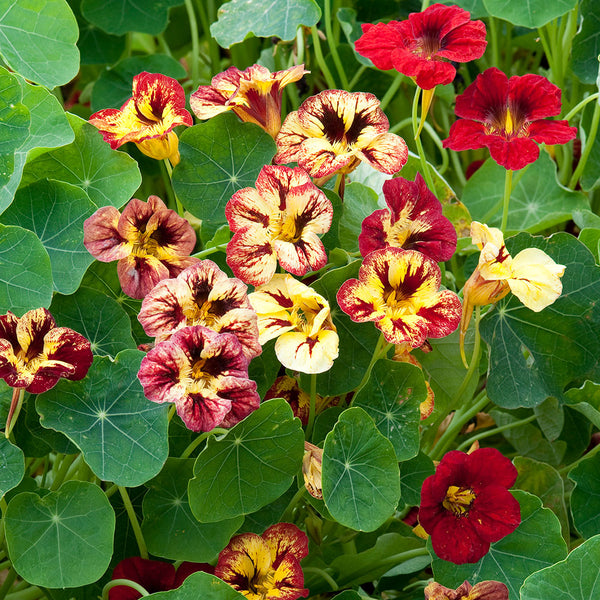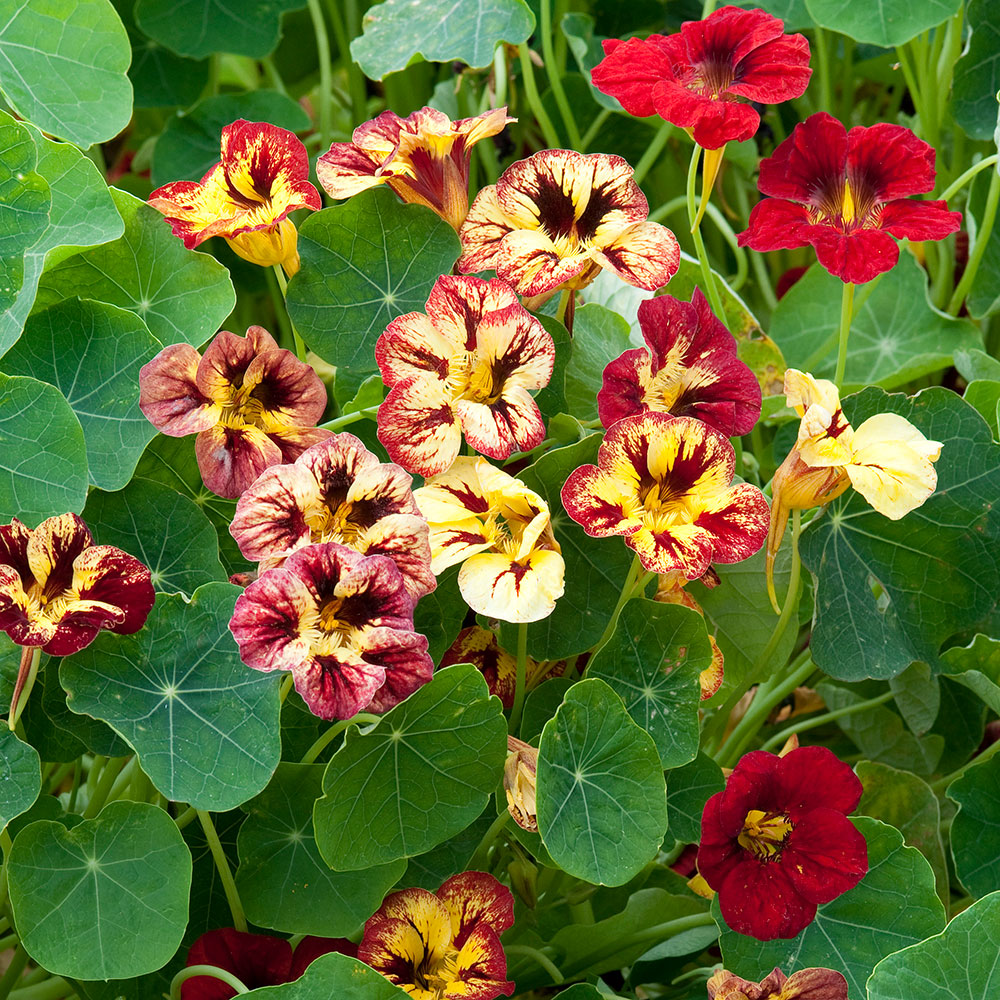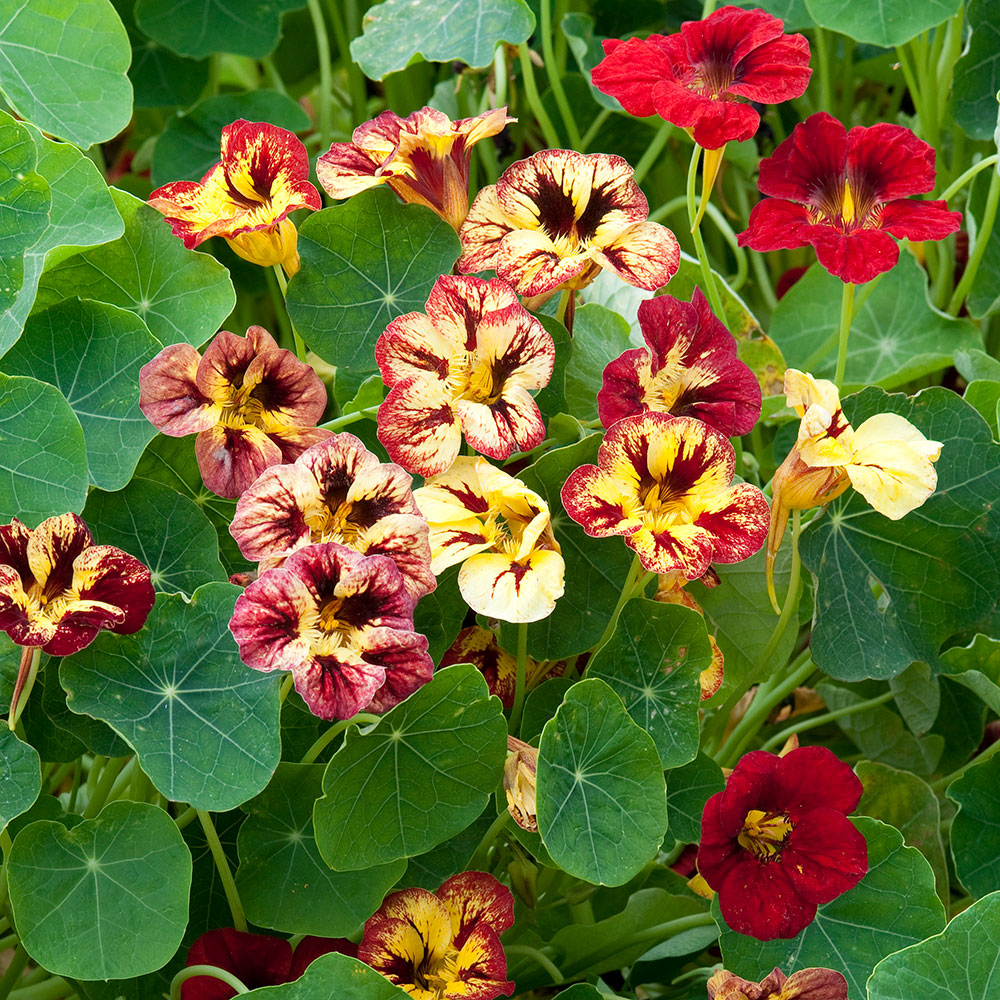SOWING INSTRUCTIONS
Seed To Bloom:
10-12 weeks
Starting Indoors:
Sow in pots 2-4 weeks before last frost. Keep at 65°F.
Starting Outdoors:
Recommended. Direct sow after last frost.
WHEN TO SET OUTSIDE
About 1-2 weeks after all danger of frost, taking care not to disturb the roots.
PLACEMENT & CULTIVATION
Nasturtiums are a joy to grow, requiring minimal care and soil inputs. They prefer nitrogen-poor soil, which encourages flower production over lush foliage growth. Adding a layer of mulch and providing some afternoon shade can help keep the soil cool and your nasturtiums happy in hot summer areas. Nasturtium seeds are quite large and easy to plant, which makes them an excellent choice for young budding gardeners. Consider adding them to your vegetable garden for their peppery flavors and pollinator-attracting qualities. Smaller varieties can be grown in pots or along the gardens edge in masses. Pick handfuls and place into old sea-green glass canning jars for perfect bouquets.
Watering Details:
About 1" per week—drought tolerant once established, however regular watering may encourage more blossoms.
Soil pH:
Slightly acidic to neutral
Fertilizer:
Do not fertilize, as this will limit blooms and stimulate excess foliage growth. Add 1" compost to poor soils.
Diseases & Pests:
Aphids may pose a problem—treat with an insecticidal soap if hosing down daily does not resolve the issue. Ladybugs may appear to help control aphids.
When to Cut for Bouquets:
Harvest when flowers are fully open.
































